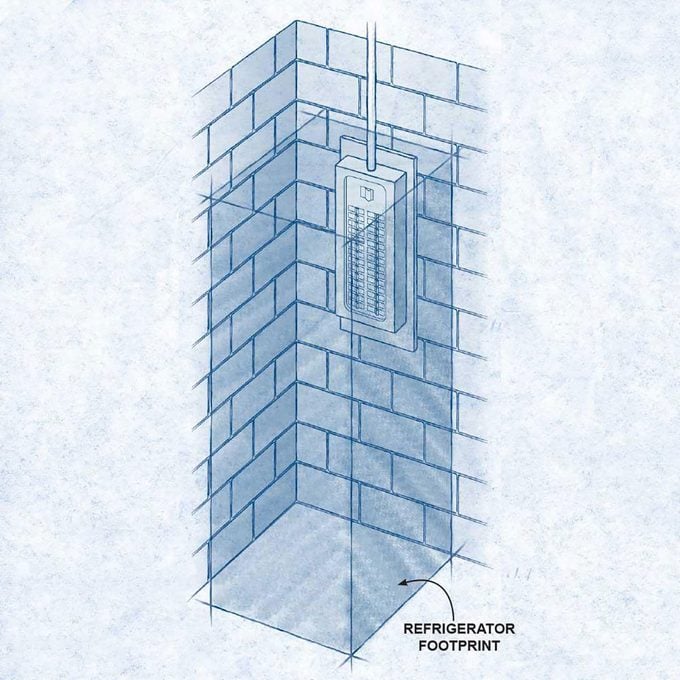Circuit Breaker Panel Clearances
Updated: Jul. 04, 2023
There needs to be empty space around an electrical panel so they can be worked on safely. Find out what those clearances are.
Question: What are the working clearance requirements around the location of an electrical panel?
Answer:
Visualize your favorite refrigerator; the volume of space that would be needed by a refrigerator is about how much working clearance you need in front of an electrical panel. Here are the basics for a dwelling; both access to the working space, and the actually working space are required. The depth of the working space is 36 inches. The width of the working space must be at least 30 inches, or the width of the panel, whichever is greater. However, the panel is not required to be centered on the working space, it could be offset to one side or the other. But, the width of the working space must allow for the panel door to open at least 90 degrees. The height of the working space must be at 6-1/2 feet. Here are a few tips for covering an electrical panel.
Other electrical equipment located above or below the panel cannot protrude more than 6-inches beyond the front of the panel. And, the space equal to the width and depth of the panel extending from the floor to the structural ceiling is dedicated for electrical equipment; that means no plumbing or gas pipes, no ductwork, or any other foreign equipment.These clearances are designed to protect the person working on the panel. It’s difficult to work safely when your arms are pinned to your sides.
Also, panels need to be readily accessible, meaning the area should not be used as storage space, be located over the steps of a stairway, or require a ladder for access. And they cannot be installed in the vicinity of easily ignitable material, such as in clothes closets. And they are not allowed to be installed in bathrooms where the moisture would create serious corrosion issues.
Always check with your local electrical inspector about the specific code requirements in your area.
Question Answered by John Williamson, Chief Electrical Inspector, Minnesota Department of Labor and Industry
John Williamson has been in the electrical industry for 40 years and is a licensed master electrician and certified building official. John has worked for the state of Minnesota for over 23 years and is the Chief Electrical Inspector. For the past 25 years, Williamson has also provided electrical code consultation to various book and magazine publishers.
